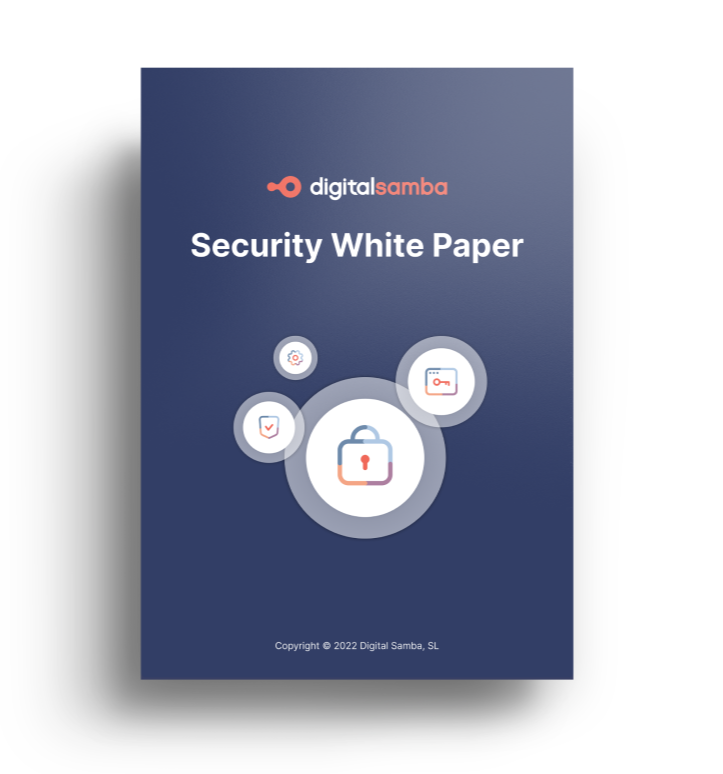Effective communication is at the core of success in the rapidly evolving business landscape. However, traditional communication methods are insufficient to meet evolving enterprise needs. Today, businesses require uninterrupted access to video conferencing, instant messaging capabilities, two-way SMS, and other communication functionalities. This is where communication API steps in.
But what is an API? An Application Programming Interface (API) serves as a bridge between different software systems, allowing them to communicate and share data seamlessly. Communication APIs, in particular, help businesses enhance and modernise their communications by providing a range of functionalities like voice calling, messaging, video conferencing, and more.
Table of contents
- What is communication API?
- Types of communication APIs
- How do communication APIs work?
- Why do businesses need communication API?
- Factors to consider when choosing a Communication API vendor/solution
- Transform your business communications with Digital samba video conferencing API
This article will explore communication API, its different types, and how businesses can benefit from it.
What is communication API?
Communication API allows businesses to integrate voice calls, video calls, text messages (SMS), and various other communication functionalities into their applications and products.
Instead of requiring specialised developers for specific communication technologies, you can leverage a top-tier communication API that effortlessly offers these capabilities.
Moreover, it comes equipped with a global network and compliant practices, eliminating the need for extensive development expertise and ensuring seamless integration into your existing systems.
By integrating communication API, businesses benefit from increased productivity, streamlined workflows, and ongoing operational efficiency.

Contact our team today!
Embed truly GDPR-compliant video conferencing into your website or app
Types of communication APIs
Communication APIs are of various types, catering to different communication needs. Each API empowers businesses to enhance their communication experience with the target audience.
The types include,
-
Messaging API
The high adoption rate of around 88% of chat services’ buyers highlights the potential for substantial business growth through API utilisation. Businesses can effectively address customer queries by integrating SMS services. This way, consumers can connect more easily with the offered services, improving customer satisfaction.
-
Voice API
Voice APIs empower businesses to integrate voice-calling functionality into their websites or applications. They can also benefit from WebRTC integration for direct calling capabilities, custom AI voice experiences, and traditional PSTN systems migration to the cloud. These enhancements contribute to enriched customer engagement.
-
Video API
These APIs allow businesses to create a customised and richer video experience for their meetings and collaborations. Video APIs help in the management of video sessions, the configuration of video settings, and the retrieval and security of data. Moreover, they provide screen sharing, recording, and audio/video quality control features.
-
Emergency calling API
By incorporating an emergency calling API, businesses grant permission to their end users to dial in and inform when any emergency occurs. It also eliminates the requirement for a SIP infrastructure or the use of a standard PIDF-LO SIP extension. With the Emergency Calling API, emergency calls can be made more efficiently, reducing the time required to establish a connection.
-
Email API
An email API serves as an interface for developers, providing companies with seamless access to a wide range of email service capabilities. This includes creating and sending impactful email campaigns, efficiently managing email templates and lists, analysing vital email marketing metrics, establishing domain authentication protocols, and customising features like an email signature example for consistent branding.
How do communication APIs work?
Communication APIs work by bridging the gap between your company's diverse systems and its core business applications, including CRMs, IoT devices, and e-commerce platforms. By implementing a common syntax and formatting protocol, APIs enable seamless information exchange among disparate systems, facilitating the sharing of critical data.
The true power of communication APIs lies in their ability to ensure secure and continuous transactions between business applications. This empowers companies to effortlessly update and modify sensitive data, such as customer records, without the fear of manual errors or unauthorised tampering.
Leveraging communication APIs also enables companies to swiftly and efficiently introduce robust communication features in customer-facing applications, surpassing in-house solutions' development pace and resource constraints.

Why do businesses need communication API?
Communication API can boost your business's underlying operation by streamlining your workflows. It acts more like a plug-and-play tool that saves developers time and the company’s resources for mission-critical business tasks. This will also result in faster time-to-market.
Let’s explore some of its benefits.
- Better customer communication experience: Communication APIs help businesses enhance customer experience by providing frictionless communication channels.
- Cost & time optimisation: Communication APIs offer a cost-effective solution as opposed to developing and maintaining in-house communication infrastructure. They also save time by providing pre-built functionalities that can be easily embedded into existing applications or websites.
- Seamless app integration: Communication APIs allow businesses to incorporate communication functionalities into their existing applications or systems easily. This enables a smooth user experience, eliminates the need for users to switch between different platforms, and promotes efficient communication within the application ecosystem.
- Increased engagement and interactivity: Communication APIs are vital in enhancing user engagement through real-time communication channels. Also, businesses can research what is a softphone to actively engage with their customers, offer prompt support, and enable collaborative interactions, leading to increased productivity and stronger relationships.
- Automation and alerts: Communication APIs enable businesses to automate communication processes, such as sending automated notifications, reminders, and alerts. This helps businesses stay connected with their customers and streamline their operations.
- Reducing manual efforts leads to satisfied customers, better internal communication, and more efficient operations.
- Scalability and flexibility: Communication APIs allow businesses to scale their communication capabilities easily to accommodate growing user demands. They enable companies to adapt to changing business needs by offering customisable features and integrations with various communication channels.
- Enhanced security: Communication APIs enhance business security through secure data transmission, authentication, and authorisation protocols. They safeguard sensitive information and protect against unauthorised access, ensuring the integrity and confidentiality of data.
- Data migration: Communication APIs can be effectively connected with data migration from legacy systems. This integration ensures that data from older systems can be smoothly and securely transferred to new platforms, maintaining the integrity and availability of critical business information during the transition. By leveraging communication APIs, businesses can automate and streamline the data migration process, minimising disruptions and ensuring a seamless upgrade to modern systems.
Factors to consider when choosing a communication API vendor/solution
Vendors offer different types of communication APIs with diversified functionalities. Therefore, it is crucial to understand their distinct features to choose the right API for software applications and end users.
Some of the factors are listed below.
-
Security & compliance
When choosing a communication API, prioritise solutions that offer robust security features and compliance with relevant regulations such as the GDPR. Moreover, look for encryption protocols, such as end-to-end encryption (E2EE), and data privacy measures to protect sensitive information.

The Digital Samba Security White Paper
Download now
-
Cost & pricing model
Consider the communication API's cost structure and pricing model. Evaluate factors such as usage-based pricing, subscription plans, or pay-as-you-go options to determine the most suitable and cost-effective solution for your needs.
-
Clear API documentation
Opt for a communication API that provides comprehensive and well-documented resources, including API reference guides, tutorials, code samples, and support documentation. Clear and accessible documentation can significantly facilitate integration and help developers understand and utilise the API effectively.
-
Scalability & reliability
Ensure the communication API offers scalability and reliability to handle increasing usage demands. Look for features like high availability and flexible scaling options like SFU scaling to ensure smooth performance even during peak usage load.
-
Support during the integration process
Evaluate the level of support the API provider provides during the integration phase. Look for resources such as developer support, technical documentation, and dedicated support channels to assist with any challenges or queries arising during and post-integration.
FAQs
In IoT, communication APIs facilitate data exchange between devices, servers, and applications, enabling smart functionality.
Communication APIs allow different software applications to interact and share data seamlessly over the internet.
WebSocket-based IoT communication API enables real-time, bidirectional communication between IoT devices and servers.
API-based communication is the interaction between software applications using APIs over a network.
An example of API communication is when a mobile app uses the Google Maps API to display maps and locations. The app sends a request to the Google Maps server, and in response, the server sends back the map data, which the app then presents to the user. This interaction allows the app to offer detailed, interactive maps without having to create and store the map data itself.
Common APIs used in IoT include MQTT, CoAP, and HTTP for data exchange between devices and servers.
Transform your business communications with Digital Samba video conferencing API
Integrating a video conferencing API like Digital Samba can be a game changer when considering communication APIs. Digital Samba video conferencing API allows you to elevate your product by seamlessly incorporating live WebRTC video, delivering a cohesive and immersive user experience.
With complete control over conference management through the API and the ability to fine-tune the experience using the SDK, you can customise every aspect of real-time audio/video communication to meet your specific needs.
The value-added benefit of GDPR-compliant EU infrastructure and end-to-end encryption (E2EE) guarantees the highest level of security for your video conferences, instilling confidence in your users.
Integrate video room API and experience seamless business communication.
Share this
You May Also Like
These Related Stories

API vs SDK: Understanding the Key Differences

Peer-to-Peer Video Calling: Best Practices for Developers

